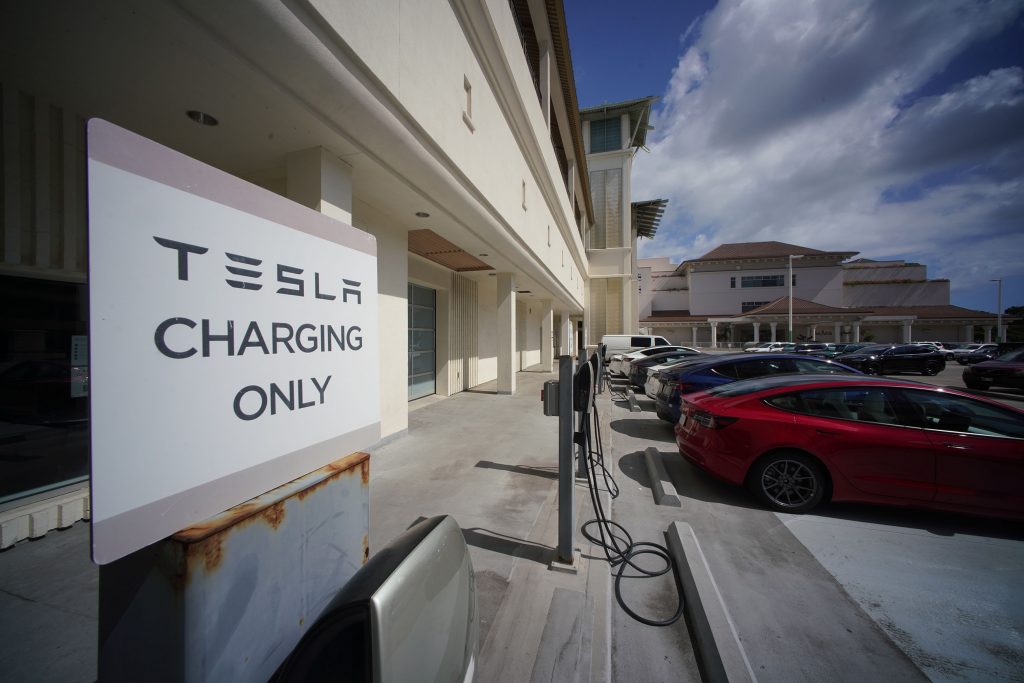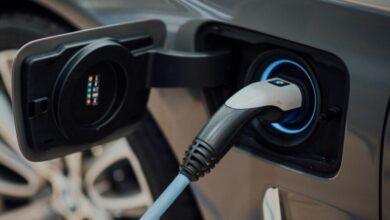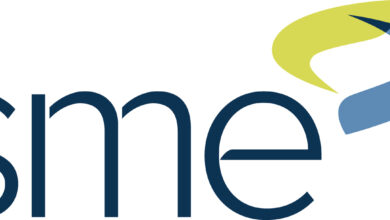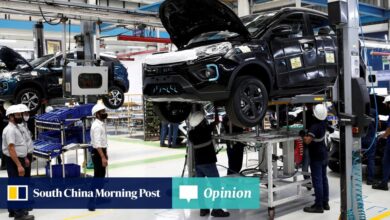Hawaii Is A Lousy Place To Charge An Electric Vehicle

It seemed like a good idea at the time. We decided to ship our all-electric Volvo to Hawaii for use during an extended stay, and why not? We loved the silky whoosh when it accelerated and the fact that we never had to go to a service station or a repair shop. We wouldn’t have a charger in the condo we were renting, but we assumed that we could find fast chargers like the ones we saw at the Target store at home.
It didn’t take long to discover the bleak reality of public charging in Hawaii. We found ourselves in what the electric vehicle community deems a “charging desert.” What should have been a routine chore was instead a frustrating expedition in quest of a charger that was not already occupied or inoperable.
My search for answers confirmed that my experience is not unique. In fact, fewer public charging stations are available in Hawaii than in nearly any other state. Unlike the rest of the country, drivers in Hawaii are dependent on a single provider for virtually all publicly available fast chargers: Hawaiian Electric Co.
The problem is the equipment chosen by HECO has a poor track record where it has been installed, and to make matters worse, it is paired with an inadequate digital network that frequently renders the chargers inoperable. HECO’s announced plans give little hope that this dispiriting picture will be improving.


For me, the prizewinning experience on the frustration tour was the day I prowled Waikiki with a dwindling charge in my battery. I had several apps on my phone and in my car that directed me to public chargers and the only ones available were what is known as level 2 chargers that would take about eight hours to restore my car battery.
I found the closest available charging station high in the upper reaches of the International Market Place garage. I was familiar with the ChargePoint equipment because I had used it on the mainland, but I could not make it work. Another driver who happened to see my frustration showed me an only-in-Hawaii hack needed to start the charging. He showed me how to pry the button on the plug backwards, a step that appears in no manual I have ever seen. When I came back to recover our car, I had to pay over $40 for parking (even with validation) on top of the $16 for the charge itself.
From that point forward, I limited my search to Direct Current Fast Chargers that rapidly charge in a little over an hour. Private companies such as Electrify America and EVGO provide widespread networks of DCFC in many parts of the mainland, but apart from a few Electrify America stations on Oahu, HECO is the only game in town for drivers in search of a public fast charger. HECO currently provides only 25 fast charging stations in the state, 17 of which are on Oahu.
The mainstay of HECO’s fleet of Direct Current Fast Chargers is the Efacec QC45, manufactured by a Portugal-based company. In reports to the Public Utility Commission, HECO has reported ongoing problems obtaining replacement parts when its Efacec units go down. Just such a delay caused the fast charging unit at the Waikiki Kapahulu Public Library to be inoperable for approximately five months.
Adding to the frustration, many of HECO’s units lack the CHAdeMO plug necessary to charge cars such as the Nissan Leaf. The company attributes the missing plugs to “frequent misusage or vandalism.”
But the Efacec units appear to have a dubious reliability record. For instance, in 2023 an enterprising private citizen submitted a report to the Maryland legislature summarizing a survey he conducted of public charging stations operated by Baltimore Gas and Electric. When he tested the same Efacec units employed by HECO, he found that less than half were fully functional, a record much worse than any other manufacturer.
Complicating the picture is the fact that HECO’s chargers are only part of the reliability equation. The devices need a system for the driver to pay for the electricity delivered to the car. HECO has contracted with two different companies, Shell Recharge and OpConnect, to provide the network and software that manages the billing for each session. This requires the driver to set up an account with the network company, and for the system to then bill the driver’s account for the charging session.
If communication breaks down and the charger cannot connect with the driver’s account, the charger will refuse to deliver power. As a result, any given breakdown may be caused by the physical charger, which is HECO’s responsibility, or a network glitch which is the responsibility of Shell Recharge or OpConnect.
Indeed, HECO reported that due to a network outage, “the majority of the Company’s chargers” were rendered inoperable from late April to early May 2023. For those drivers who relied on HECO chargers, the oasis in the desert dried up.
Frustrated Drivers
In my experience, HECO’s chargers randomly fail to connect with the Shell Recharge network. When I called the Shell helpline, the operators would frequently lament that the chargers in Hawaii have difficulty connecting to their network. One operator told me that the station number for the HECO station on Ward Avenue, the most heavily used station on Oahu, was “indelibly marked in my brain.”
Other frustrated drivers suggested that I get the Shell RFID recharge card, which connects directly with the charger. I ordered mine in March, and when I contacted Shell in April, they had run out of cards but said my card was on its way from Canada. It still hasn’t arrived.
One Shell Recharge employee laid the blame for network problems at the feet of HECO, claiming that the company’s equipment was substandard. It’s frustrating to encounter finger-pointing, but there may be something to the complaint. According to the technical specifications for the Efacec QC45, it communicates with the web via a 3G router, two generations behind the current cellular network.
HECO claims to be addressing the inadequacy of the current public charging network on two different fronts. In 2021, the company petitioned the Public Utility Commission for approval to install 150 single-port fast chargers and 150 dual-port Level 2 chargers. HECO concedes that even if approved, the additional chargers provide only 28% of the fast charger ports and 10% of the level 2 ports needed to support state’s charging needs by 2030.
Furthermore, the petition projected the first five chargers being installed in the year following PUC approval. That application is still pending two and a half years after its filing, leaving HECO’s projected expansion already a year and a half behind schedule.
Just as frustrating is HECO’s discussion of its reliability record. Its application to expand its network assured the PUC that “Hawaiian Electric can provide reliability for the long term.” The company’s discussion of its reliability record focused on a survey of third parties who hosted its chargers.
Hidden in the exhibits to the application are results of surveys of drivers who actually use — or attempted to use — HECO’s fast chargers. There, in the fine print, HECO admitted that 82% of the surveyed drivers who have used a Hawaiian Electric public charger “indicated they had arrived at a charging station to find it not functioning,” with 56% indicating “that this happened ‘sometimes’ or ‘always.’”
The surveys included comments like, “We do not travel because regular charging takes too long and fast charge stations are not available.” Another driver complained, “We have been almost out of batteries many times and it’s nearly impossible to find a charger that works.”
HECO is also replacing what it delicately refers to as “end-of-life and unreliable stations.” It has begun replacing its Efacec chargers with Tritium RTM chargers. It has already installed one such fast charger at a 7-Eleven in Hawaii Kai. It has received a satisfaction score of 6.9 from the PlugShare. This good, but not great, score contrasts with the abysmal 1.0 score for the Efacec chargers at HECO’s Ward Avenue site.
But Tritium will not be leading Hawaii’s electrical vehicle drivers out of the desert anytime soon. Last month, the Australia-based company announced that it was insolvent and its lenders had appointed a receiver to take control of Tritium’s assets while seeking a buyer. This key element of HECO’s plans to expand its network and to replace old unreliable stations is now seriously in doubt.
Growing Demand
The problematic availability of reliable public charging will be an increasingly significant issue for the state. The number of electric vehicles in the state increased by 31% in 2023 and accounted for 16% of new purchases. Only California and the District of Columbia have more electric vehicles per capita but, paradoxically, Hawaii ranks second from the last in the number of fast chargers per vehicle.
Many owners of electric vehicles are able to navigate the public charging desert. I have found the newly repaired HECO charger at the Waikiki Kapahulu Public Library has been reliable since it came back online. The charger now uses the OpConnect network and there have not been the connectivity issues I experienced with Shell Recharge. However, the results from HECO’s survey reported significant driver dissatisfaction with chargers using OpConnect, providing little confidence that this will offer a permanent solution to the charging travails.
HECO reports that 81% of electric vehicle drivers live in a single-family home and they can access convenient charging in their driveway. However, that is not a solution for everyone; 24% of all drivers surveyed reported having used a HECO fast charger at least once. Of those, 34% use the chargers at least weekly and 11% cite the lack of a charger at home as their reason for using the HECO chargers.
Hawaii will have to expand its public charging network if it plans to make electric vehicles a practical option for the broad public. If having a home charger is the only convenient recharging method, electric vehicles are doomed to be a niche product unavailable to residents in multifamily settings.
While a home charger may be sufficient in metropolitan Honolulu, it is unrealistic for people who have to travel distances such as on the Big Island, Maui or the North Shore of Oahu. To overcome the “range anxiety” that inhibits a potential buyer from purchasing an electric vehicle, drivers need to know that quick, reliable charging options are readily available.
Hawaii ranks second from the last in the number of fast chargers per vehicle.
Indeed, taking the factors into consideration, HECO has forecast that Hawaii will need 528 additional fast public chargers by 2030 to meet the expected demand.
Hawaii is by no means the only state that has struggled to construct a reliable charging network for electric vehicles. However, the disconnect between the eagerness of Hawaii consumers to embrace electric vehicles and the state’s pitifully inadequate public charging network is a clear signal that we’re on the wrong path.
HECO acknowledges that its proposed expansion is a drop in the bucket; the state will need to look to other providers to meet the need. Even then, the PUC has yet to act on HECO’s petition to expand its network which has been pending since 2021.
Just as importantly, the PUC needs to consider the experience of those drivers who must forage among the paltry public charging options offered in Hawaii. HECO should explain how it chooses its charging equipment and its network providers, and whether there are more reliable options on the market.
I’m certain that there are many drivers of electric vehicles who have a positive experience with their purchase, but at some level, their solution to the charging dilemma relies on finding some kind of work-around.
The fact that electric vehicles are increasing in numbers is heartening but troubling at the same time. The higher the demand, the greater the burden on an already inadequate network.
Would I recommend an electric vehicle to someone in Hawaii? The answer clearly is, “Be careful, it’s a desert out there.”




